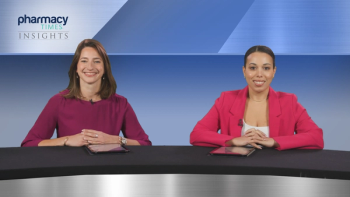
Treatment Landscape Surrounding Multiple Myeloma
A panel of experts navigate the treatment landscape in multiple myeloma.
Episodes in this series

Ryan Haumschild, PharmD, MS, MBA: Let’s provide a brief overview of the treatment landscape in multiple myeloma. Dr Ali, I will look to you. If you could, please give us an overview, particularly touching on the use of the anti-CD38 monoclonal antibodies.
Amir Ali, PharmD, BCOP: TheCD38s are the game changers, if I may say. We have the main 2 anti-CD38 antibodies, daratumumab, or the brand name Darzalex, and isatuximab, or brand name Sarclisa. These agents have been found to be highly effective in the treatment of multiple myeloma, both up front and in the relapsed/refractory setting. They’ve been studied for the past 10 years or so. They first were studied in the relapsed/refractory setting as a monotherapy, and then they were studied in combination with data in the early relapse setting. Now more commonly, all these new studies we’re seeing are in the upfront setting for multiple myeloma. I think that’s the direction we’re heading, using these anti-CD38 agents more so in the frontline or early relapse settings.
Ryan Haumschild, PharmD, MS, MBA: Dr Hossain, in your experience, which treatment regimens are most utilized in relapsed/refractory setting? I know it depends on some of the patient’s previous exposure, but if you could, give us an overview of those treatment regimens most utilized in the relapsed/refractory.
Shahrier Hossain, PharmD, BCOP: That is an excellent point. I think of it as 2 categories: patients who’ve had quadruplet therapy and patients who haven’t had quads. The easier ones to talk about are the ones who haven’t had the quads yet. For those patients, if they are not refractory to Revlimid, or lenalidomide, you can consider adding elotuzumab or ixazomib to them, if they’re older or frailer and are valuing something a little more gentle vs adding a monoclonal antibody like daratumumab or isatuximab right away. We also do favor combinations with anti-CD38s with pomalidomide, carfilzomib, or sometimes if they’ve already experienced those medications, going straight to pomalidomide, carfilzomib, and dexamethasone, or even selinexor in similar situations. Our practice is typically to reserve selinexor for some of the more heavily pretreated patients, the ones who have a good performance status and can handle some of the toxicities associated with it. I will say for relapse, the context does truly matter. We’ve had patients with acute renal failure in the clinic who required urgent admission and salvage therapy with ISA [isatuximab]. I do want to be cognizant of that.
Then lastly, we can’t not mention venetoclax for those patients with translocation t(11;14). We combine them off-label with a couple of other medications, including a CD38 monoclonal antibody and sometimes a proteasome inhibitor as well. Then BCMA has been our 4 lines or more group. Belantamab was taken off the market just recently. We still have some patients on it who are doing relatively well. Then the 2 CAR [chimeric antigen receptor] T-cell products, which as mentioned before, have a significant cost burden. I would also say a hospitalization burden. Some patients just can’t take a week or 10 days off of work to be admitted. They can’t handle the CRS [cytokine release syndrome] toxicities, the ICANS [immune effector cell-associated neurotoxicity syndrome] toxicities. You truly need a healthy patient for those products. Teclistamab, the bispecific antibody, has similar toxicities, a similar admission. I think the CRS toxicity may be a little gentler, however, the trade-off might be an increase in infectious toxicities that we see.
I think as you may notice, we do typically still prefer triplet over doublet therapies in these relapsed/refractory patients. Talking about the quads, I think that’s a little harder because then all your lines of therapy are a little mismatched. When they say you must go through 2 prior lines of therapy and you’ve had an IMiD [immunomodulatory drug] or a proteasome inhibitor, that may change with some of your insurance payers and what they will cover.
Ryan Haumschild, PharmD, MS, MBA: Thanks for giving us that overview. I think it was really helpful, from the doublets and the triplets, to many of the agents used in the relapsed/refractory setting. Dr Hanna, at what point would you switch a patient to an alternative therapy when you’re thinking about this treatment landscape?
Kirollos S. Hanna, PharmD, BCPS, BCOP: That’s an excellent question, Dr Haumschild. I think one of the main things we have to consider when we’re talking about potentially switching therapy, you look at the IMWG [International Myeloma Working Group] criteria. That’s one of the main criteria we utilize in our patient population with myeloma. That helps us evaluate what is the depth of response that a patient has, but also at the same time, the type of relapse or what those relapse criteria mean for many of our patients.
Obviously in multiple myelomas, one of the key things we follow is proteins. You initiate a therapy in your patient, you expect that their proteins are going to be significantly reduced. You monitor those throughout the treatment course as they’re coming in. You also monitor for the control of their symptoms, hallmark symptoms of myeloma, your CRAB [calcium, renal failure, anemia, bone lesions] symptoms. You’re potentially going to see an improvement in your renal function. You’re going to see improvement in your hypercalcemia, so your calcium levels. You’re potentially going to see also an improvement in your anemia.
When you look at, for example the IMWG criteria, what they define as some of the things talk about relapse. It’s going to be talking about any type of new soft tissue plasmacytomas or bone lesions that develop after you’ve initiated that patient on therapy. Any type or any sizable increase in plasmacytomas or bone lesions. Their hypercalcemia worsening and getting to above 11.5 mg/dL. Their hemoglobin also worsens, decreasing by at least 2 g/dL. Also their potential renal function starts to slowly or gradually get worse. They define a lot of criteria, but oftentimes those would be some of the things we start to look at when we’re trying to evaluate, are my patients still benefiting from the therapy they’re on, or is it now time to switch to something else? Whether that is switching them to a 4-drug regimen incorporating CD38s, or it’s simply swapping out something as their IMiD therapy. Those would all be appropriate options and some of the criteria to look at.
Ryan Haumschild, PharmD, MS, MBA: It seems like CD38 monoclonal antibodies are being added to a lot of regimens. It’s almost a cornerstone of so many different approaches to care.
Transcript edited for clarity.
Newsletter
Stay informed on drug updates, treatment guidelines, and pharmacy practice trends—subscribe to Pharmacy Times for weekly clinical insights.


















































































































































































































